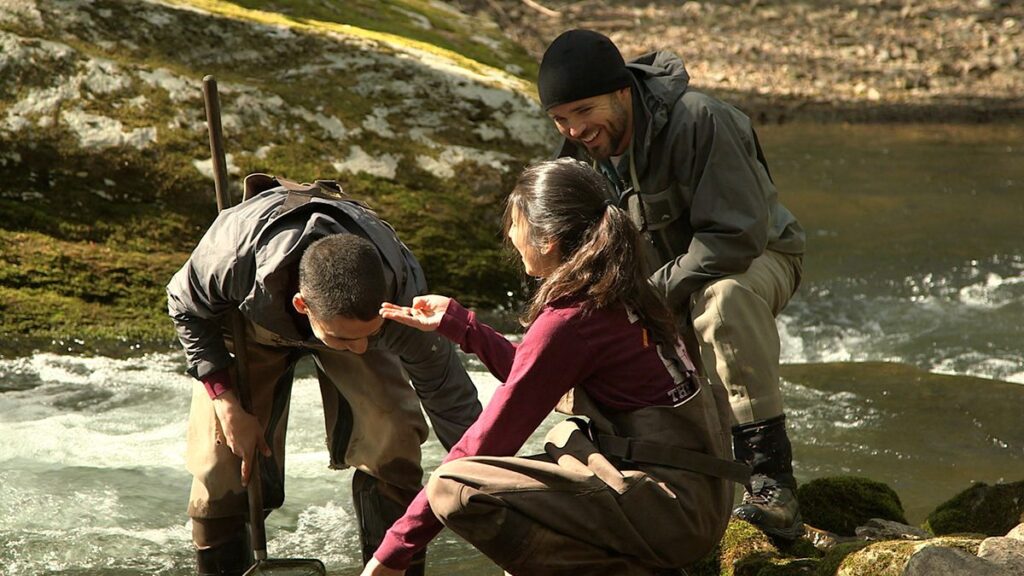Virginia Tech faculty members William Hopkins and Robert Bodnar were part of a 13-person technical team convened by the National Academies of Sciences, Engineering, and Medicine (NASEM) to provide their subject-matter expertise to produce “The Potential Impacts of Gold Mining in Virginia” report released in early November.
Recent increases in gold prices and other factors brought renewed attention to gold mining at both new and historical sites in Virginia, spurring the introduction of House Bill 2213 to the Virginia General Assembly. The bill directed the secretary of natural resources, the secretary of health and human resources, and the secretary of commerce and trade to establish a work group to study gold mining in the commonwealth. The Virginia Department of Energy contracted NASEM to fulfill the mandate.
NASEM is a private nonprofit organization founded by Congress in 1863 to provide independent and objective guidance to the nation on the most pressing societal issues of our time.
In order to achieve a reasonably balanced committee to carry out the charge objectively and credibly, NASEM sought recognized experts from diverse disciplines and backgrounds. Each committee member was nominated and then vetted through a rigorous process that included an evaluation of any conflicts of interest and a public comment period.
Over the course of more than a year, the committee worked to gather and interpret information from diverse sources. This included presentations and discussions with representatives from industry, academia, community-based organizations, and state and federal governments. The committee also heard from stakeholders during town hall meetings and visits to communities as well as while touring several mines in Virginia and South Carolina.
“Our task as a committee was to evaluate if Virginia has the appropriate regulatory structure to safely start gold mining again,” said Hopkins, who served as the committee’s chair and is a professor in the Department of Fish and Wildlife Conservation in the College of Natural Resources and Environment.

The committee included additional experts from industry, state government, the U.S. Geological Survey, and faculty members from University of California Berkeley, Missouri University of Science and Technology, University of Illinois, University of Michigan, Colorado School of Mines, Johns Hopkins Bloomberg School of Public Health, and Michigan Technological University.
Hopkins previously served on four NASEM committees, one of which he chaired, that addressed issues related to freshwater resources, mining, management of waste from fossil fuel combustion, and research data quality in federal agencies. Additionally, he provides guidance to state and federal agencies, industry, and other stakeholders on issues related to environmental degradation and threats to biodiversity.
As the founding director of the Global Change Center, one of the four core centers in the Fralin Life Sciences Institute, Hopkins’ research focuses on how anthropogenic disturbances such as climate change, pollution, and habitat loss affect wildlife.? He has experience evaluating how activities such as fossil fuel extraction, combustion, and accidental spills affect the environment.
A wealth of information
“If gold mining were to resume in Virginia, regulation and oversight should be the cornerstone of state efforts to mitigate negative impacts,” Hopkins said in several interviews after the reports’ release on Nov. 2.
“But as Virginia’s laws and regulations currently stand, they are not up to the task of minimizing the risks to Virginia’s communities and environment by ensuring that industry adheres to modern engineering standards and best practices. Our report points to opportunities to strengthen these systems to minimize risk of harming water resources, ecosystems, and human health.”
Bodnar is the C.C. Garvin Professor and University Distinguished Professor in the Department of Geosciences in the College of Science. His research focuses on the role of geofluids in various geologic processes, including the formation of mineral deposits and extraction of energy and mineral resources, and he brings nearly 40 years of experience working on gold and metal deposits in Virginia and globally. This includes leading a multidisciplinary and multiyear study examining uranium deposits and environmental impacts of mining in Virginia’s Piedmont region.
 For the report, Bodnar was charged with assembling a detailed description of the geological and geochemical characteristics of Virginia gold deposits and then extrapolating these data points to identify deposits elsewhere around the globe that exhibited similar features.
For the report, Bodnar was charged with assembling a detailed description of the geological and geochemical characteristics of Virginia gold deposits and then extrapolating these data points to identify deposits elsewhere around the globe that exhibited similar features.
This insight, in coordination with other contributions by the committee, was essential in estimating the potential impacts of any gold mining that might occur in Virginia in the future.
Bodnar points to several imperatives from the report, including the need for a broad, interdisciplinary and multidisciplinary approach involving geoscientists, ecologists, regulators, mining engineers,?health professionals, and others to properly assess the complete range of potential impacts of gold mining on the environment and public health.
“The most effective way to minimize potential impacts from gold mining is to begin with a cradle-to-grave approach that considers all aspects of exploration, development, mining, remediation, closure and long-term monitoring from the very earliest stages and, importantly, solicits and includes input from all stakeholders involved,” said Bodnar.

